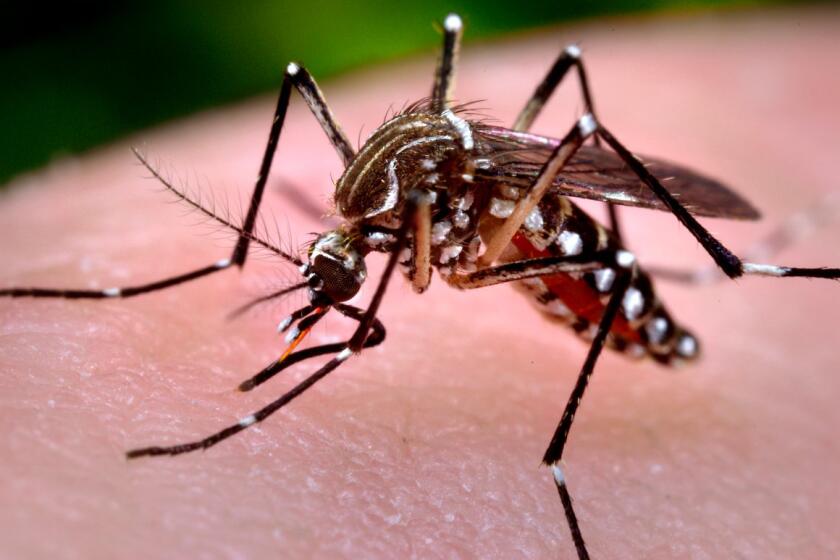L.A. Met Some Goals, Became Healthier City in ‘90s, Study Says
Over the decade ending in 2000, Los Angeles dramatically boosted its public health ranking to 15th of the nation’s 100 most populous cities, up from 62nd in 1990, according to a study of national health data released Tuesday by the State University of New York.
Los Angeles achieved national goals set for five of 11 measures of public health set by the U.S. surgeon general for the decade, including posting sharp declines in the rates of AIDS, gonorrhea and syphilis. In 1990, Los Angeles met only one of the surgeon general’s goals, according to the study.
But neither Los Angeles nor the other 99 cities surveyed hit a vital measure of public health: reducing the number of low-birth-weight babies so that no more than five of every 100,000 newborns weigh less than 5 1/2 pounds. In fact, only two of the 100 biggest cities’ suburbs--those of Stockton and Portland, Ore.--met the goal set by the surgeon general.
Dennis Andrulis, a report co-author, noted that the two cities and many of the top 10 are centers of high-tech industry. The data, he said, suggested they were able to translate wealth generated by high tech into better public health.
Low birth weight is a common indication of poor nutrition, illness or smoking by expectant mothers. It can result in children with long-term disabilities including cerebral palsy, autism and mental retardation, the study’s authors said. Cigarette smoking by expectant mothers--long the usual explanation for low birth weights--declined from 18% to 13% nationally during the 1990s, however.
The study found that infant mortality declined 21% in cities nationally--and 27% in Los Angeles--during the 1990s. But the United States is still ranked 27th internationally, below Portugal and Greece, for example, and on a par with Cuba.
California’s cities generally scored well on the new ranking. San Jose tied with Portland, Ore., at the top of the list, with each meeting eight of the 11 goals. San Diego (7) and Sacramento (6) also scored higher than Los Angeles. Fresno, Oakland/Freemont, Santa Ana/Anaheim and Stockton equaled Los Angeles with scores of 5.
Among California cities, only Bakersfield, Riverside and San Francisco finished below Los Angeles. Each met three of the 11 national goals.
Public health officials traced the improvement in the incidence of sexually transmitted diseases to better public awareness campaigns, increased use of protected sex and--for AIDS--the availability of new drugs to prevent HIV-positive people from developing the disease.
“We’ve had a decline ever since the drugs came on board in 1995 to 1996,” said Jim Creeger, the chief of the HIV/AIDS registry at the California Department of Health Services’ AIDS office.
Still, some recent trends trouble public health officials. In San Francisco, where the rate of reported AIDS cases declined by two-thirds in the 1990s, syphilis cases in the first six months of this year more than doubled from the previous year, according to San Francisco Department of Public Health records.
And the existence of so many healthy HIV-positive people holds out the potential for an outbreak of the disease if the new drugs lose their effectiveness over time.
Moreover, the syphilis rate has shot back up in Los Angeles since 2000. The rate jumped 37% in the first six months of this year compared with the same period in 2001, according to the County Department of Health Services.
The murder rate--another of the public health measures--has turned up locally and nationally since 2000.



